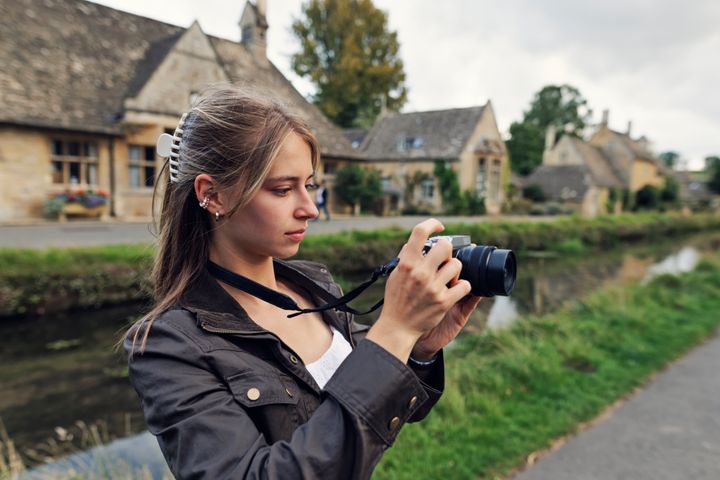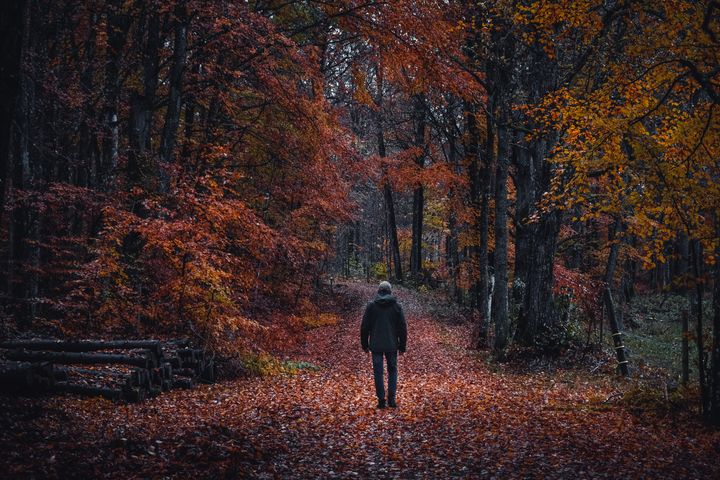
People plan vacations around all types of goals, from sports to sleep to sustainability. For an increasing number of people, however, the focus of their travel is much more solemn, or even macabre ― a practice known commonly as “dark tourism.”
Dark tourism is not a new travel trend but is as relevant as ever, particularly around spooky season. It likely spikes around this time of year for a reason.
So what exactly is dark tourism and what does it involve? Below, industry experts break down the benefits and downsides.
What is dark tourism?
Dark tourism refers to an approach to travel that involves visiting places associated with death, tragedy and suffering.
“I think this can cover an incredible range of ideas in travel, from places that honor people who have died in wars to famous crime scenes,” Laura Motta, senior director of content at Lonely Planet, told HuffPost.
Dark tourism destinations include battlefields like Gettysburg and Omaha Beach, disaster sites such as Chernobyl and Pompeii, haunted buildings a la The Stanley Hotel and Lizzie Borden House, and death and burial-related locations like the Paris Catacombs and Taj Mahal.
“These are places where travelers dive headlong into difficult, unsavory and complicated history,” Motta said. “It can be a way to learn new things, pay your respects and challenge your perspective, if you’re doing it the right way.”
Some tourists are drawn to the places where famous people died, even opting to stay in specific hotel rooms like the one where musician Gram Parsons died (and where his spirit supposedly still lingers). Others seek tours of locations associated with crimes, particularly unsolved cases involving homicide victims like Elizabeth Short, who is known as the “Black Dahlia.”
“Dark tourism, especially tours and historic sites with tragic pasts, has always been popular,” said Lance Zaal, president and founder of the tour company US Ghost Adventures. “However, with the recent surge in interest around true crime, there’s been an even greater curiosity for dark tourism in general.”
Travelers’ awareness of dark tourism, and the wide range of sites and experiences around the world associated with it, has increased with the rise of social media. There are also shows like the docuseries “Dark Tourist,” which highlights morbid places in destinations like New Orleans, Japan, South Africa and Colombia.
“The TV program ‘Ghost Hunters’ probably increased people’s interest in the paranormal and made it more mainstream,” said Larry Stanford, owner of Ghost Tours of Newport. “Our travelers vary from couples, families, especially during the summer, and even seniors who are interested in learning about some of the bizarre and dark history here.”
Why are people drawn to this type of travel?
“Dark tourism appeals to our curiosity and fascination with death and the unknown,” Dengler said. “I think dark tourism is popular for the same reasons serial killer and horror material is so popular. In addition to creating excitement, it is also a learning experience that allows for empathy and reflection.”
He added that many dark tourist sites are also traditionally popular historic sites or are located near them, so your visit would allow for additional exploration beyond the death aspect. Dark tourism can also offer the opportunity to examine a famous place through a new lens.
“I think the need to engage with places that bore witness to all kinds of human experience and emotion ― good and bad ― is natural. It’s a way to understand ourselves and our world.”
- Laura Motta, senior director of content at Lonely Planet
“Ghost tours are a great way to learn about the authentic, gritty underbelly of the place you are visiting, rather than the sanitized tales that the local tourism board or chamber of commerce might prefer to be shared,” said E.R. “Bucky” Cutright, co-founder of Columbus Ghost Tours. “As our societies become more and more homogenized, they also offer a unique alternative to the cookie-cutter tourist trap ‘McVacation’ experience. Unlike a zipline, wax museum or jump-scare haunted attraction, ghost stories are, for the most part, nestled into the past of the place where they occurred and, consequently, site-specific.”
He believes ghost stories also help connect the past to the present.
“Learning about a certain character from a city’s history is one thing, but hearing that they still haunt the area and that you just might see them helps to keep the history relevant,” Cutright explained. “Plus, who doesn’t like feeling a cold chill go down their spine from time to time?”
Beyond the thrill factor or historical interest, there are more emotional reasons to engage with dark tourism.
“You might visit a war memorial to commemorate a loved one,” Motta said. “I think the need to engage with places that bore witness to all kinds of human experience and emotion ― good and bad ― is natural. It’s a way to understand ourselves and our world.”
Visiting the sites of dark events and eerie happenings throughout history might feel too macabre for many tourists, but for others, it’s a dream vacation filled with inspiration, entertainment, introspection and a new appreciation for life.
“As someone who not only works in dark tourism, but participates in it, I have to say that my own travel experiences are so much richer for seeking out and staying in old, haunted hotels, eating at historic pubs and restaurants, and visiting off-the-beaten-path sites with a sordid past,” Cutright said. “For the most part, these establishments are small businesses and, by frequenting them, you not only get a true feel for the soul of the place you are visiting, but you also support the local economy, which can be rewarding in itself.”

Here’s what you should know before you try dark tourism.
With the rising interest in this kind of travel comes many downsides and problematic dynamics.
“I don’t see [dark tourism] as new,” Motta said. “Washington, D.C., is a city of somber memorial sites. The memorials at Auschwitz and Hiroshima were opened in the 1940s and 1950s. What feels new ― but probably isn’t ― is a trend of going to these kinds of places to gawk, create inappropriate content for social media, trespass, interrupt local life, or otherwise act disrespectfully to the place and its history.”
She noted that dark tourism can go too far by drawing visitors to places where they shouldn’t be at all.
“After devastating wildfires destroyed the town of Lahaina, Maui, in 2023, travelers started coming over to take photos of the burned buildings,” Motta said. “This was not just disrespectful to people who lost their lives and livelihoods, but it also created problems for first responders whose priority was caring for the local community, not dealing with tourists.”
Dengler recalled how a recent visit to the Catacombs of Paris led him to reflect on the downsides of dark tourism.
“While it was a fascinating experience, I could not help but feel like we were disrespecting the remains of everyone down there,” he said. “Though we did not touch or disturb anything, none of the deceased people down there asked or agreed to essentially become a tourist attraction.”
Another major issue Motta sees is inappropriate or exploitative behavior at sites that have a solemn or complicated history.
“New Yorkers are all too aware of the tourists who take grinning selfies at the 9/11 Memorial,” she said. “Damage from overtourism and bad behavior has led to visitor restrictions and even closures at cemeteries in New Orleans. While these kinds of sites can bring incredible meaning and value to a trip, there’s a right way and a wrong way to go about your visit.”
In addition to environmental and preservation concerns, overtourism can also wear away at the allure that drew travelers to these places in the first place.
“Monetization of ‘hits’ and ‘likes’ has led to an uptick in online articles and social media posts that strive to feature ever-more-obscure locations ― often without regard to the genuine history of the sites or the ethical implications of spreading misinformation and sharing their locations,” Cutright said. “This has led to an influx of visits and vandalism to otherwise quiet, hidden and historic locations ― robbing them of their secretive and special nature.”
“New Yorkers are all too aware of the tourists who take grinning selfies at the 9/11 Memorial.”
- Motta
Mindfulness is crucial if you decide to visit a location associated with death, crime, war, tragedy, suffering or any kind of darkness.
“While I recognize the downsides, I think dark tourism is a good thing when done right,” Dengler said. “It is often an educational and enriching experience when the traveler maintains a level of respect.”
He pointed to the steps many dark tourist destinations have taken to minimize the potential damage, like daily visitor limits and signage indicating proper conduct.
“With this kind of travel, it’s really important to do some research beforehand to understand how and why other people are visiting these sites,” Motta urged. “What’s the right way to be respectful? How should you dress? Is it a quiet space? Should you leave your kids at home? But it also seems right to do some introspection about why you want to see these kinds of sites in the first place. If you’re looking for gore, or for the kinds of thrills you could get in a haunted house, you might want to reconsider or refocus your visit.”